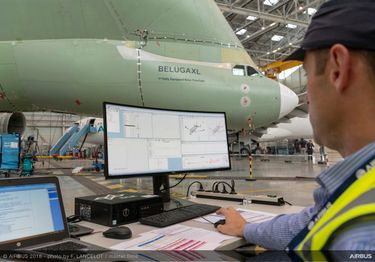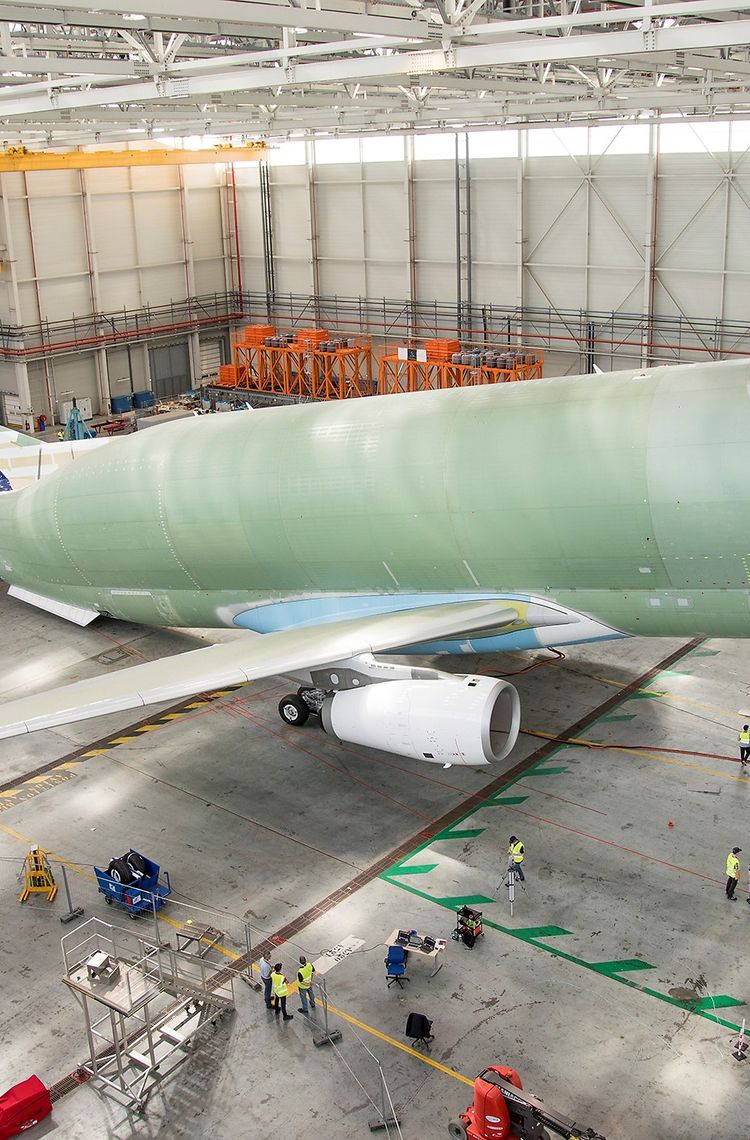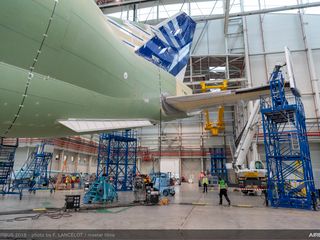In preparation for its upcoming maiden flight, Airbus’ first BelugaXL is now in its heavy ground test phase – which focuses on the highly modified airframe for this next-generation oversize cargo airlifter.
According to ground test project leader Mathieu Laemle, a total of 72 development and certification ground tests must be performed before the BelugaXL’s high-profile first flight, which is planned for this summer. “With more than 48 tests already completed, we are on time,” he added. “The big challenge was to be able to anticipate or modify the test scheduling so as not to impact final assembly.”
Airbus has succeeded in keeping things on track thanks to early analysis of the requirements and excellent multidisciplinary collaboration between the design office, laboratories, tests and programme teams.
Intensive testing for the BelugaXL
Heavy ground tests started with the team weighing the no. 1 BelugaXL at “pitch zero” and then at “pitch nine,” lifting the aircraft’s nose by 3.5 metres to determine the empty weight centre of gravity. Next, they performed the standard loads and horizontal tailplane tests, which were followed by separate evaluations involving the dorsal fin and vertical tailplane.
The heavy ground test phase involves carrying out tests on the aircraft that would usually be conducted on a static cell. “It is unusual for us to perform tests like load calibration using the generalised finite element method of analysis on an aircraft which will fly, as we usually use a dedicated clean aircraft without any systems inside,” explained BelugaXL aircraft configuration leader Arnaud Puyo.
With the loads calibration test campaign completed, the team then began ground vibration testing performed in conjunction with the French ONERA aerospace research centre and DLR, the German aerospace research centre. The eight-day ground vibration campaign, which began 28 May, saw the BelugaXL tested while both empty and fully loaded. The activity required one week of intensive preparation during which the aircraft was put on pneumatic suspension and special shakers were installed to make it move.
The team identified 30 different locations for the 80-kg. shakers and during tests lasting two-to-three hours, sensors inside and outside the aircraft measured the structure’s response. Vibration data from the test are used in validating and improving structural dynamic models for the aircraft.
Looking ahead
With the ground vibration tests now complete, subsequent steps ahead of the aircraft’s maiden flight include validating the flight test instrumentation and applying the BelugaXL’s special “smiling” livery.
Starting in mid-2019, the BelugaXL will gradually replace the existing five-member Beluga ST fleet – which is used for carrying complete sections of Airbus aircraft from different production sites around Europe to the final assembly lines in Toulouse, France and Hamburg, Germany.






